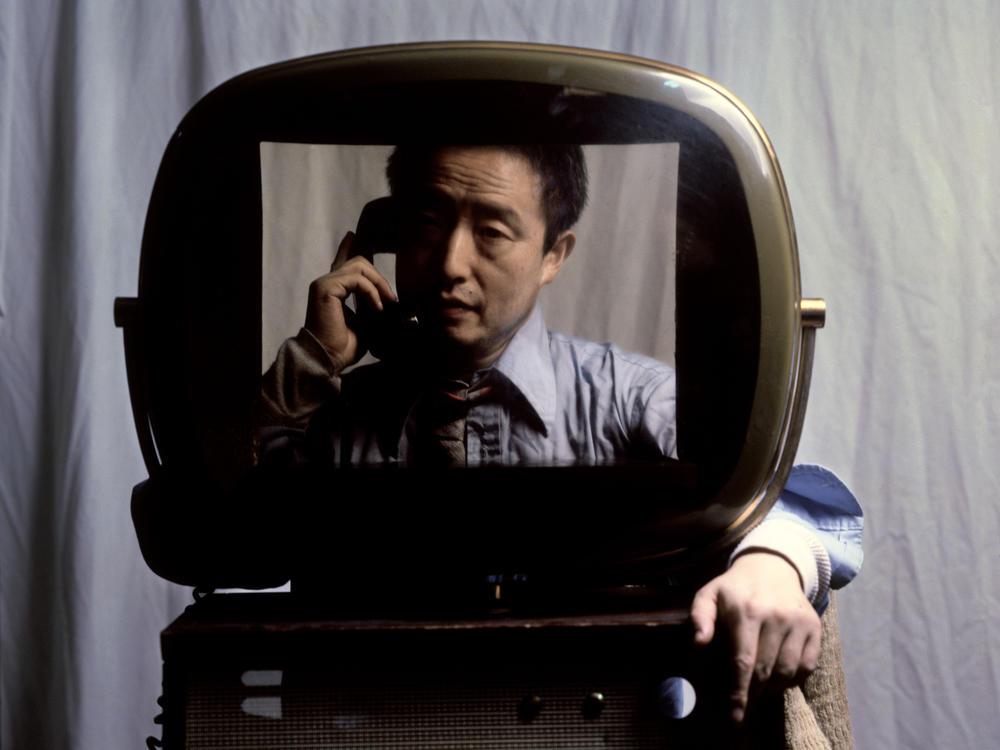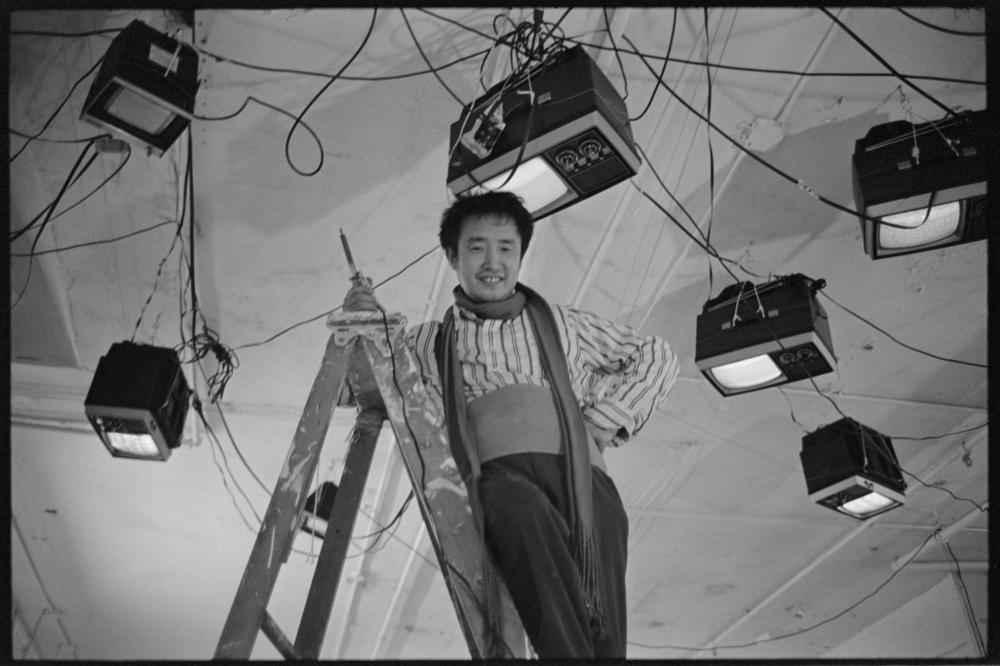Section Branding
Header Content
New film explores how 'the father of video art' pioneered an art form
Primary Content
In a world saturated with digital technology, video art now seems like a given. But sourcing video, electronics and computers to make fine art feels obvious, in part, because the pioneering artist Nam June Paik made it so. Widely referred to as the father of video art, Paik – who died in 2006 – is the subject of the new documentary, Nam June Paik: Moon Is the Oldest TV.
The film emphasizes the prescience of his work, and the courage he showed in dedicating his life to the moving image at a time when painting topped the art world hierarchy. "Film was considered a form of entertainment," explains Alexandra Munroe, Senior Curator of Asian Art at the Guggenheim Museum and one of the contemporary artists and curators who sing Paik's praises on-screen. "It wasn't considered an art form yet, and what did Nam June choose? He chose the media of video."
Directed by Amanda Kim, Nam June Paik: Moon Is the Oldest TV (which premiered at Sundance in January) tells the story of Korean-born Paik's life and legacy through interviews with art world luminaries, readings of Paik's written words, media coverage and archival footage of his work. Born in 1932 to one of Korea's most affluent families, Paik's development as an artist took a critical turn after he went to Munich in 1956 to study music and saw avant-garde composer John Cage perform. "My life started one evening in 1958," Paik wrote, "1957 was B.C. (Before Cage)." Cage gave Paik "the courage to be free." Smashing a violin, setting a piano on fire, and using his body as an instrument could be art, and not just art, but rebellion: against the Western order and otherwise constricted notions of freedom. These new possibilities would inform the rest of Paik's career.
Foreseeing that television would eventually replace the radio, Paik decided to buy a TV, and became inspired when he opened up the back. He aimed to do to television what he thought Cage did to music: take the seriousness out of it. "I use technology in order to hate it more properly," he said. But for years, few took Paik seriously. A critic's review of Paik's first TV exhibition in 1963 (which also happened to be the world's first TV exhibition) headlined: "Plenty of Noise, Few Ideas. The Young Korean Wanted to Shock – But the Results Were Vapid."
What ultimately put Paik on the map was his 1974 piece TV Buddha, a video sculpture that depicts a Buddha statue watching its own image on an adjacent television screen. The installation meditates on varying themes – from the relationship between self-absorption and technology to the contrasts and parallels between East and West. After its premiere, magazines like The New Yorker described Paik as a "video visionary" and outlets like The Today Show wanted an interview with him. By 1982, Paik had a show at the Whitney Museum of Modern Art; it was the first museum retrospective in history to honor a video artist.
But while Kim takes time to illustrate Paik's transformation into an influential figure in the art world, she is more concerned with bringing him to life and tracing the origins of his philosophies than cleanly stating the influence of his work. The most direct way she demonstrates Paik's inspiration to other artists is when she places clips of his video art (most are from his 1973 Global Groove montage) side-by-side with those that came after it, such as a 1984 7UP commercial or Prince's "When Doves Cry" music video. For those completely unfamiliar with Paik, this absence of detailed explanation on how his impact can be seen today might seem unsatisfying. However, Kim's approach parallels Paik's own persistence in creating art that expands possibilities, and also honors the importance of his work, regardless of the way it shaped the work of others. The revolutionary artist's legacy is best defined not only by his willingness, but also his need for constant experimentation – to break things, to take them apart and to predict the future while doing so.
The documentary builds to a transcendent finale, in which Kim provides a window onto a spectacular exhibit in 2000 at the Guggenheim, called "The Worlds of Nam June Paik." One of its installations, titled Jacob's Ladder, features a magnificent, zig-zagging green laser beam running through a seven-story waterfall. At the top of the atrium is a spiraling, laser-projected cyclone known as Sweet and Sublime. The camera pans up and down the Guggenheim's giant rotunda, framing the ladder as a spear that dissolves into the swirling abyss. Paik died a handful of years after that, and though we'll never know his thoughts on iPhones or AI or TikTok, his work continues to interrogate the relationship between art and the ever-evolving technologies around us.
Copyright 2023 NPR. To see more, visit https://www.npr.org.


